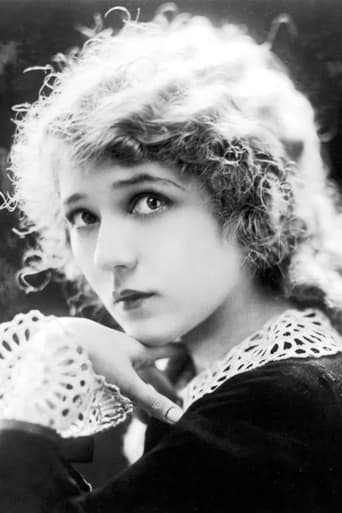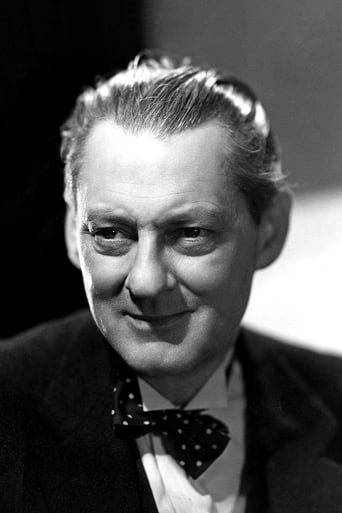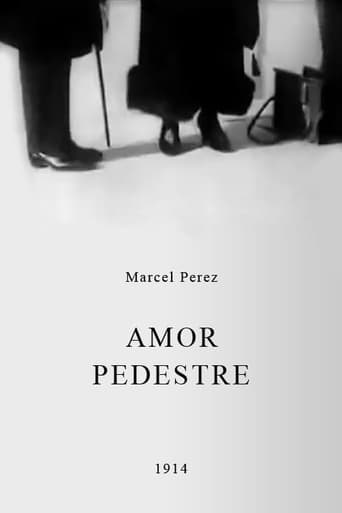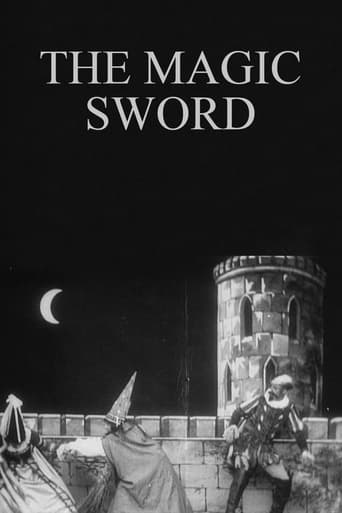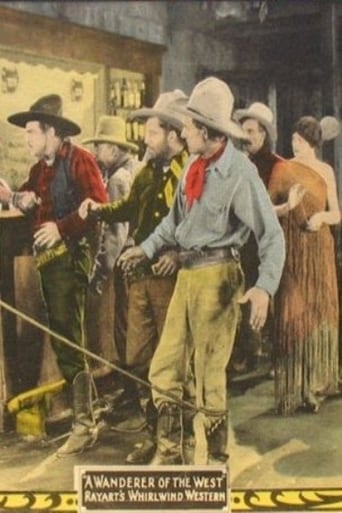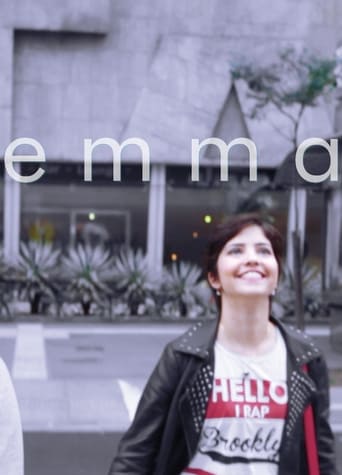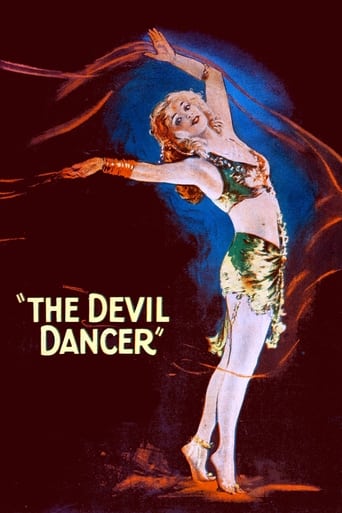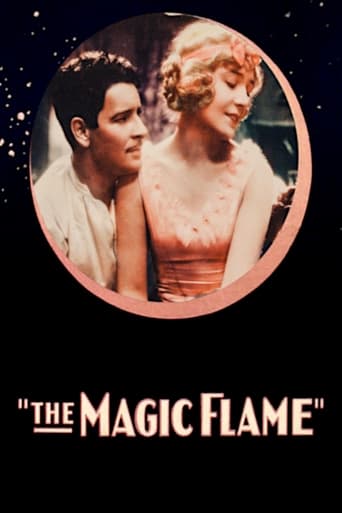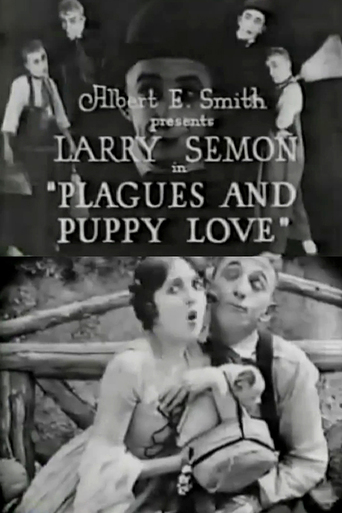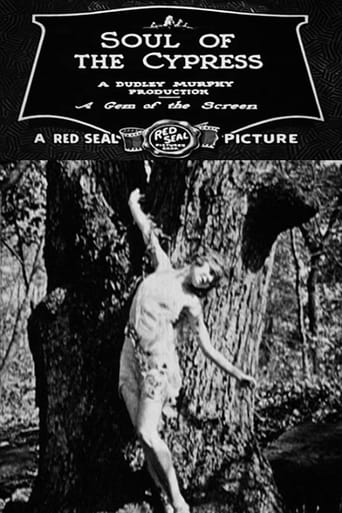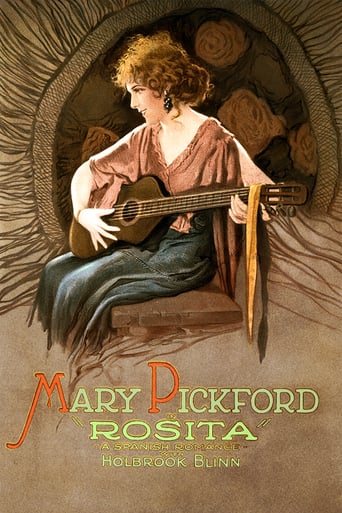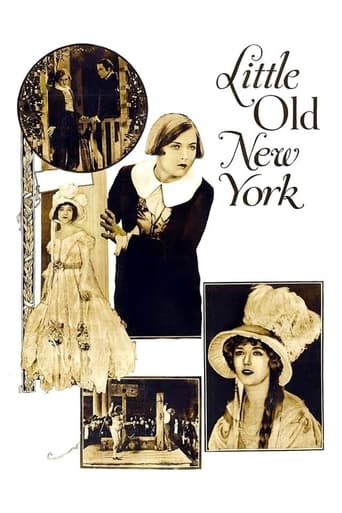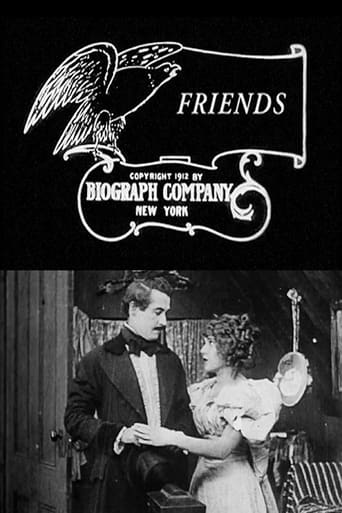
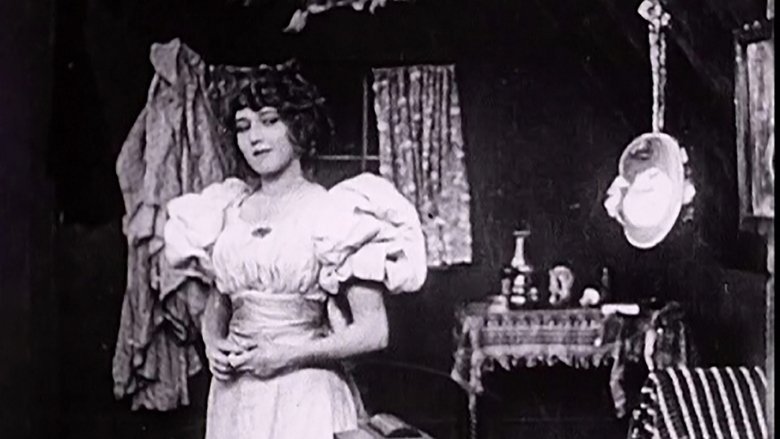
Friends (1912)
The orphan Dora is courted by two different gold miners.
Watch Trailer
Cast
Similar titles
Reviews
Powerful
This is one of the few movies I've ever seen where the whole audience broke into spontaneous, loud applause a third of the way in.
It is a whirlwind of delight --- attractive actors, stunning couture, spectacular sets and outrageous parties.
I didn’t really have many expectations going into the movie (good or bad), but I actually really enjoyed it. I really liked the characters and the banter between them.
A dramatic little love story in the costume of the 70's and which happens to be set in the West. The atmosphere is truly Western, but this is merely because the producer, having chosen to set his situation in a gold diggings country, used backgrounds of all kinds in perfect keeping. There are but three characters in the foreground, the daughter of the innkeeper and belle of the mining village (Little Mary); a young blade, perhaps a gambler or a speculator, who is dressed in a frock coat and topper (William Walthall), and a miner of a rather rough but honest appearance. These two men are the "friends," and the picture's chief object is to set forth the character of the young blade. He holds women in more or less contempt; but for his friend he holds a just respect. It is a realistic picture that appeals to the mind rather than to the emotions. A commendable picture; it will interest all kinds of people. The gallery will like the atmosphere; the critical will enjoy its matter. - The Moving Picture World, October 5, 1912
The 1912 film Friends, may or may not have been the first film to use a closeup, but it was certainly the first extreme closeup for Mary Pickford. She tells in her autobiography, It was late in the afternoon when Griffith shouted to Billy Bitzer, the cameraman: "Come on Billy, let's have some fun! Move the camera up and get closer to Mary." She had done something different that day herself, putting on a second application of make-up. They took the shot, and Mary couldn't wait to see the results. Back at the studio's projection room, she was shocked at the grotesquely magnified face on the screen, and immediately noticed her excess use of eyebrow pencil and eye shadow. Lionel was just as shocked by his own appearance on the screen, asking Mary "Am I really that fat? She didn't want to answer him, hoping he would let it drop, but he repeated the question insistently, that Mary finally replied, "I'm sorry, Mr.Barrymore, but you are." "Then that does it," declared Barrymore, " no more beer for me." She was also upset with the dress she wore, in Friends, an old dress of her mother's with large balloon sleeves that made it look nearer 1894 than the 1849 called for in the story. Mary Pickford was always hypercritical of her work, especially her early films. The detailed-minded actress worried later, of looking foolish and being laughed at, because of what she considered, the crudeness of her early films. Thank goodness she changed her will, as to not having her movies destroyed and this early Biograph example survives for fans of Pickford and silent film genre to enjoy.
DW Griffith made a fair few westerns, and most of them fit into the genre conventions of the time tales of adventure and exploration (with the hero often an easterner) which would later give way to the pioneer wagon pictures of the 1920s. Friends however is a small-canvas romance in the same vein as many of Griffith's contemporary pictures of 1912.For whatever reason, Friends sees Griffith in experimental mode, trying out several new techniques and styles, some of which he would never really explore again. First, there is his cutting between long-shots and mid-shots. In the saloon bar, he several times cuts from Mary Pickford in the background on the staircase, with the barflies lounging all over the foreground, to a mid-shot framing her on her own. This technique creates two very different spaces on the same set. This isn't the first time Griffith had done this, but it's certainly one of the most effective examples from this era. The camera is beginning to be freed up, and we are moving towards what would later become normal coverage and editing patterns.It's often been pointed out that Griffith never used point-of-view shots, but here he does come close. While it's true he never actually showed a shot of action from another character's perspective, those close-ups of the photograph in Friends are at least a shot of an object from the point-of-view of a character. Now, arguably such a shot is just a variation on the title card, just as when we see a detail of a letter, but Griffith does at least literalise it, including the hand in the frame and thus making it clear that the audience sees it as the character does.This is also probably Griffith's most extensive use of title cards being character's spoken words, and inserted into the middle of scenes, as oppose to the usual explanatory title cards at the beginning of each scene. Griffith would use "speech" titles a lot more in his features, but they were never the majority. It is possible though that the original titles are lost, and Friends was later restored with new titles, which I believe is the case with some of the Biograph shorts.A pretty distinguished cast is lined up here. Mary Pickford was by now instated as Griffith's primary leading lady, after having spent an unusually long time hovering in the background in supporting roles. She proves herself perfect for the subtle, naturalistic approach that was by now the hallmark of Griffith dramas. Pickford is ably supported by Henry Walthall and Lionel Barrymore. Considering his later status and "type" it's odd seeing Barrymore so frequently playing these unkempt rakish figures in his days at Biograph.By the way, Mary Pickford once claimed that a shot of her in Friends was the first ever close-up, and this was repeated as true in Robert Windeler's biography of her. However, a glance over Biograph shorts from as early as 1910 prove this is not the case.
The fine cast is what makes this simple drama of romantic relationships worth seeing. Mary Pickford, Lionel Barrymore, and Harry Carey (looking quite young and skinny) would make any movie worth seeing, but here it is actually Henry B. Walthall who grabs the spotlight with a charismatic and interesting performance.The story has Pickford as an orphan, now a young woman, who has grown up as the darling of a gold mining town. As her beau, Walthall has a role a little less one-dimensional than many of his roles from the era. As his character's name implies, Dandy Jack is an attention-getting, slightly self-absorbed figure. Walthall fleshes out the character quite well, making him much more than a mere caricature of the type, solely through small gestures and expressions.The rest of the fine cast also does well. There's actually very little to the story, and so the characters really have to carry the movie, along with a slight boost from the setting in and around mining settlements, which is interesting but not particularly detailed.
